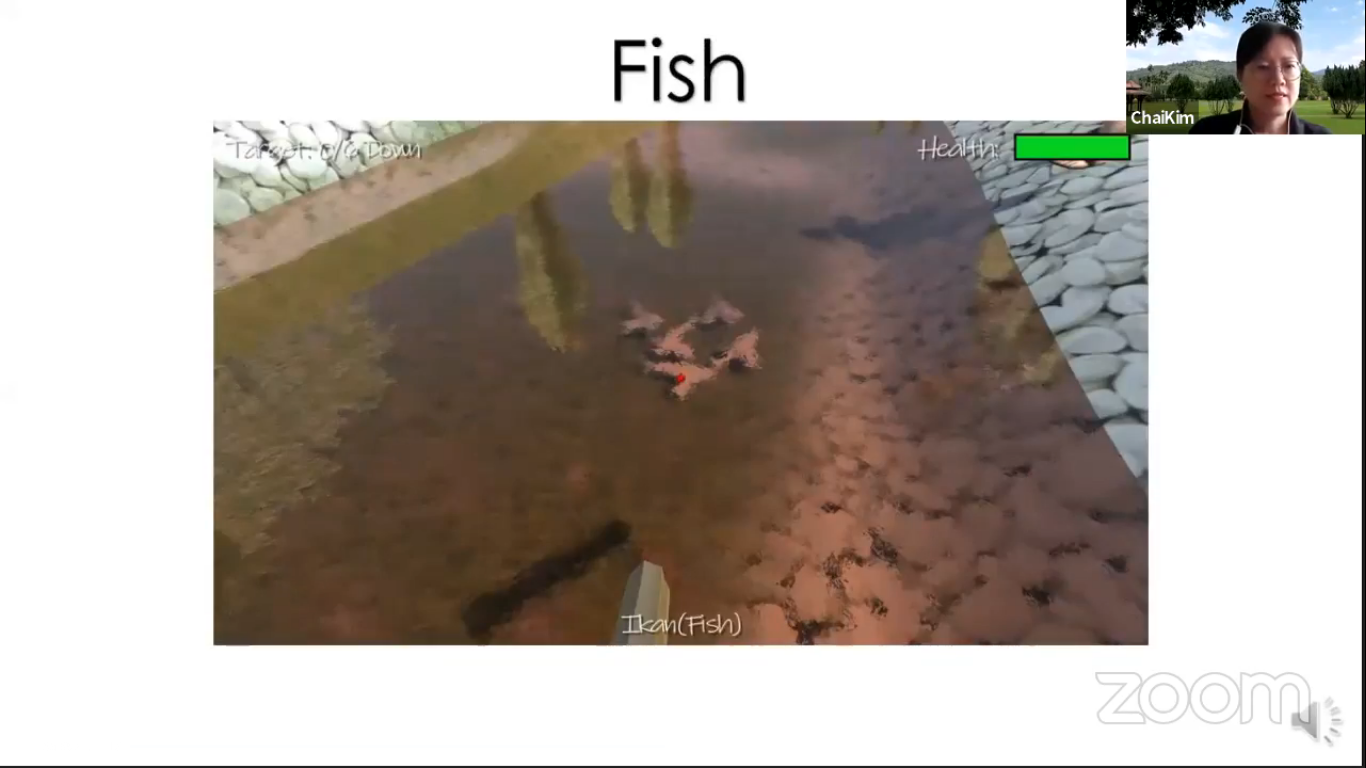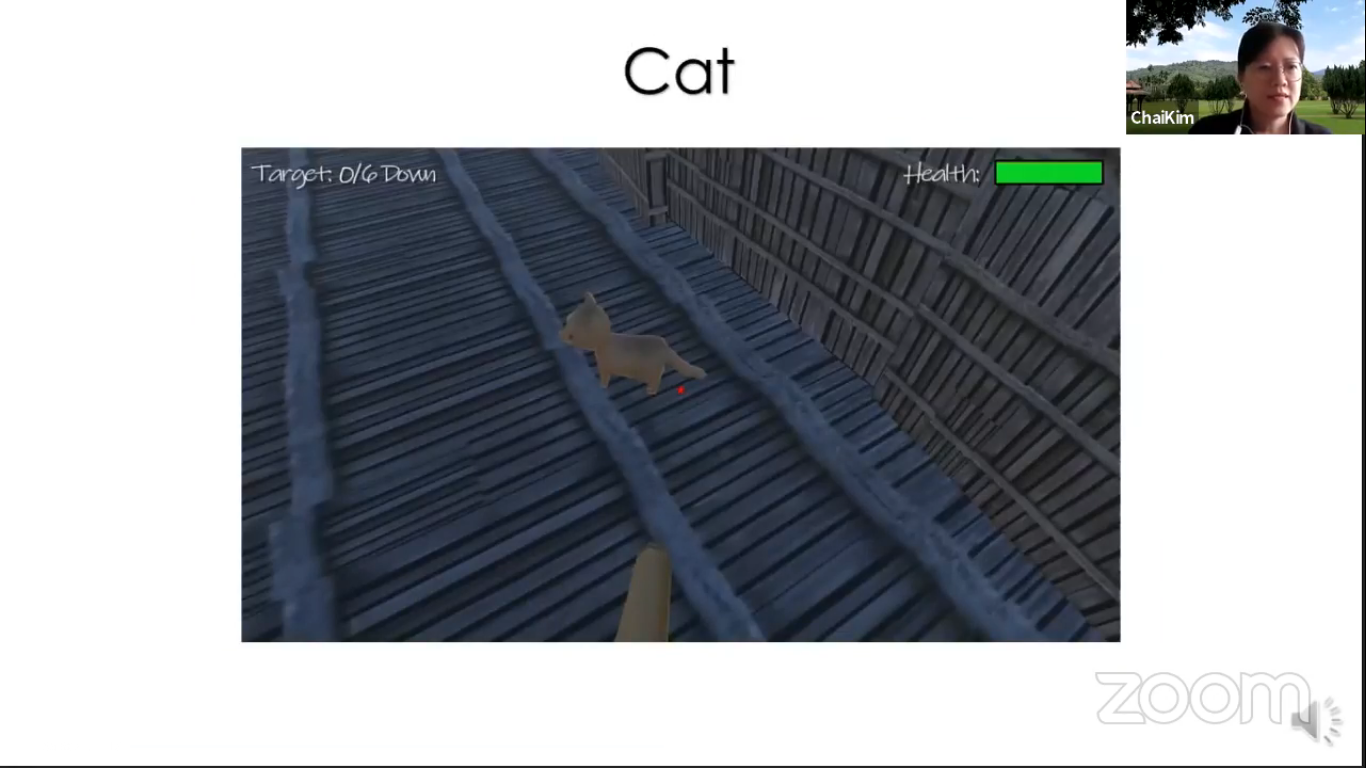
In view of the current COVID-19
pandemic this year, the
Kuala Lumpur
Engineering Science Fair (KLESF) has staged another comeback via online
platforms. A series of virtual events filled with STEM (Science, Technology,
Engineering and Mathematics) workshops, webinars and quizzes were organised
aimed to promote the interest in STEM of primary and secondary school
students.
To be in line with the e-KLESF
events, a webinar titled “Immersive Technology for Heritage and Culture
Preservation” was held on 14 December 2020 via ZOOM and Facebook Live. The
webinar was aimed to introduce the importance of heritage and culture to the
young generation and to share the making of immersive technology for
heritage and culture preservation – Virtual Reality (VR) Longhouse the
Walkthrough.
Invited to be the speakers were
UTAR
Centre for Immersive Technology and Creativity (CITC) Chairperson Dr
Aloysius Yapp and Faculty of Creative Industries (FCI) Lecturer Lim Chai
Kim.
.jpg)
Dr Aloysius Yapp
Dr Aloysius Yapp began his webinar
with a brief introduction on the CITC. He then explained the purpose of VR
and said, “VR technology is used to create immersive experiences that can
help educate and even entertain consumers. Outside of its popular gaming use
case, VR is applied in a variety of industries. VR is one of the
technologies with the highest projected potential for growth. According to
the latest forecasts from IDC Research (2018), investment in VR and
Augmented Reality (AR) will multiply 21-fold over the next four years,
reaching 15.5 billion euros by 2022.”
“VR is mostly involved in gaming.
They are engaged in lots of technology. When we try to use the VR
technology, we are ‘INTO’ the game, for example, chasing, running, fighting
and flying in the Virtual Environment (VE) with VR technology support. In
VR, we talked about the user experience. We need user experience so that we
can educate; we can do ‘Edutainment’ process which is one of our focus,”
said Dr Aloysius Yapp.
Sharing on the Iban Longhouse
Project is the main focus of the webinar. He said, “We started this project
from level one to level three. My team members have ventured with me in this
project since 2013. We had to perform data collection, asset construction
and prototype development. These are our main phases in research
methodology.”

Dr Aloysius Yapp
sharing the framework of the research methodology
While explaining on the framework,
he emphasised the importance of ground work and said, “To develop the Iban
Longhouse project, I brought my team members to my hometown which is
somewhere nearby Saribas district in Sarawak. We are so lucky to have the
internal funding from UTAR which allowed us to do the data collection. We
went to the river, the paddy and pepper farm, the traditional Iban longhouse
and the staircase, to name a few to get inspiration. The products inspired
in nature are more attractive, unique, lean and well thought, either it is
in aesthetics or functional inspiration. We need to understand the concept
first. We need to understand the environment and its functionality; we need
to be familiar before we engage with the process to develop the VE. We need
to touch, feel and smell to create the user experience which is important to
the developer and designer itself. ”




Some of the field
work shares by Dr Aloysius Yapp
“After data collection, they will
bring back to the studio to do the sketches. So when they do the sketches,
the design team and the development team will discuss together on how to
develop this and build the 3-Dimensional (3D) model. All the information
collected has to put in a system called Digital Archiving, so the people can
sort it out from there,” explained Dr Aloysius Yapp.
Sharing the thought on this project, he said, “Our
research in reconstructing rare or disappearing items and culture from my
homeland has led me to believe that the virtual world is a cost-effective
platform for preserving the things that will one day vanish from this earth.
In designing something new, it is useful to learn from the past. This is our
main objective.”


The photos show
Traditional Longhouse and Modern Longhouse
“Coming to our 2019-2020 project also level four, we
are trying to engage with 3D Virtual Guided Walkthrough (VGW). In addition
to the VE, this is a project which consists of Non-player Characters (NPC)
which will act as a guide for the user or player on where to go next or to
prompt the user to do a certain action in the VR Walkthrough. To complete
this project we have to do the data collection again from the ground. After
the requirement preparation, we have to perform the blueprint, level design.
We also need to do the voice-over and linguistic training. The voice-over in
the game for now is a prototype; we hope that we could study more on the
Iban language to polish the voice-over. Besides, we also applied Artificial
Intelligence (AI) in this project,” said Dr Aloysius Yapp.



Lim
Lim on the other hand explained
the NPC AI and said, “The AI is used to make the NPC more natural. For
example, the Iban man in the long house and the kid which will try to look
for the player. There also have a cat that will move along some waypoints
and also a school of fish in the river.” She then explained the NPC AI with
the state diagrams.




The NPC AI

Bird-eye view of
the first long house shows the navigation area of the Iban man


Lim demo on “Ngasu”
— a hunting game
.jpg)
Virtual gallery in “Ngasu”
“Our next project, which is level
five, we will try to engage with Art Scene. We hope that by introducing this
practise, we can create a virtual gallery or virtual showcase centre. So,
this is one of the key areas that we want to venture in future,” said Dr
Aloysius Yapp.
He then concluded the webinar
with, “We hope by using immersive technologies, the younger generation will
get to experience something that could no longer be available to them. While
appreciating the comfort and conveniences they currently enjoy, they still
have the chance to revisit what their parents or ancestors experienced
before.”
The webinar then ended with an interactive Q&A session followed by a group photo session.

Dr Aloysius Yapp (second from top left) and Lim (second from right) with the participants
![]()
Wholly owned by UTAR Education Foundation Co. No. 578227-M LEGAL STATEMENT TERM OF USAGE PRIVACY NOTICE